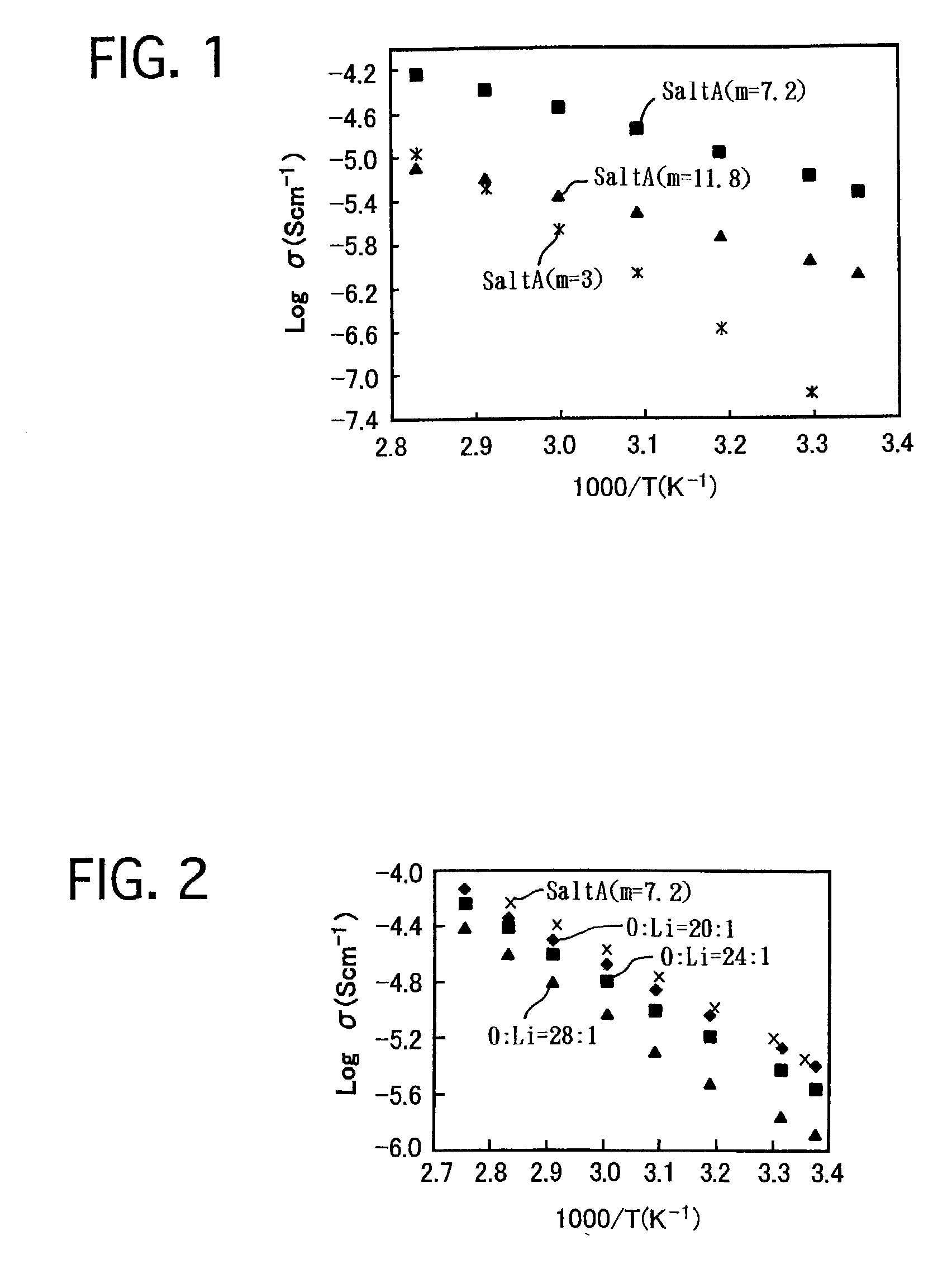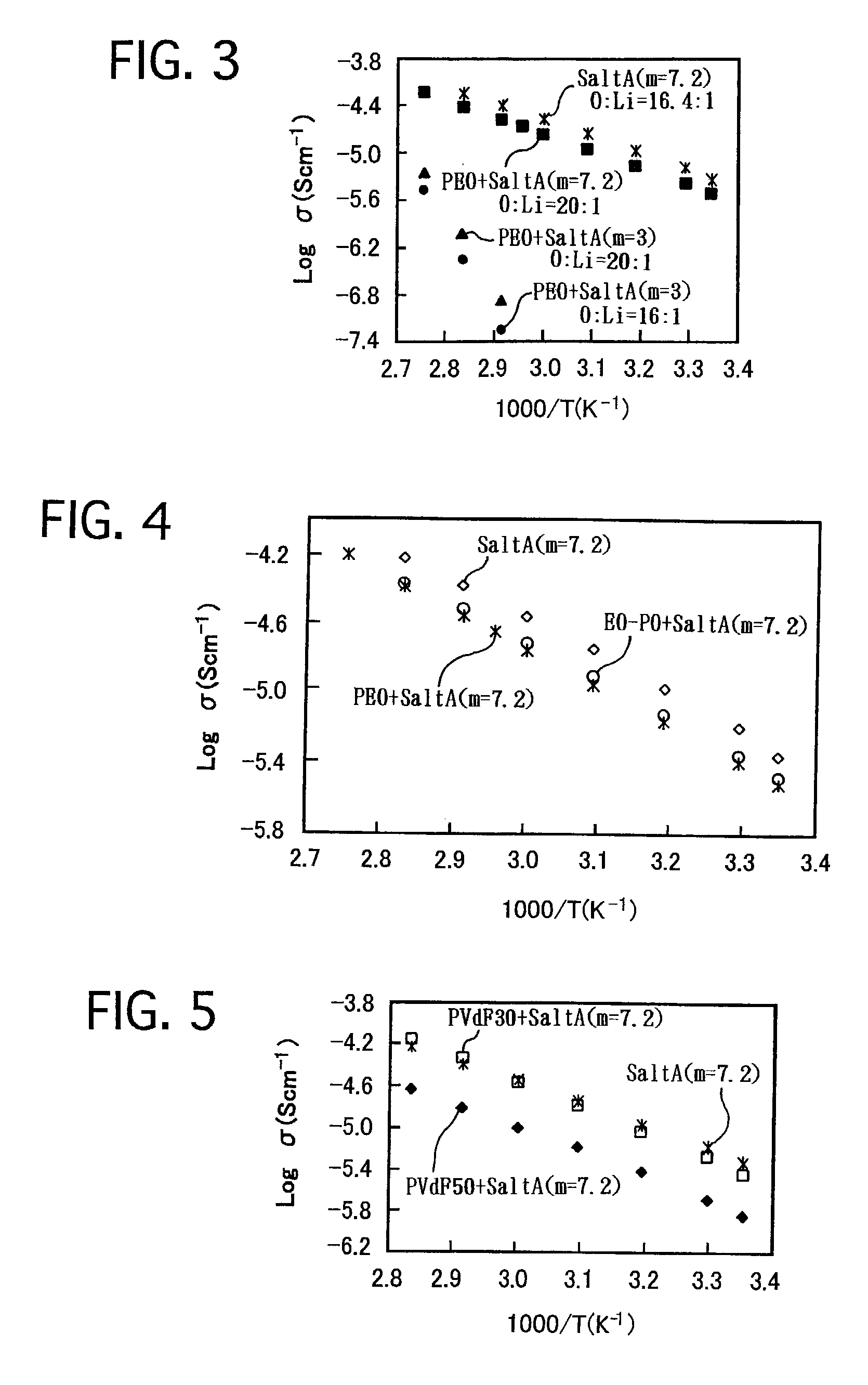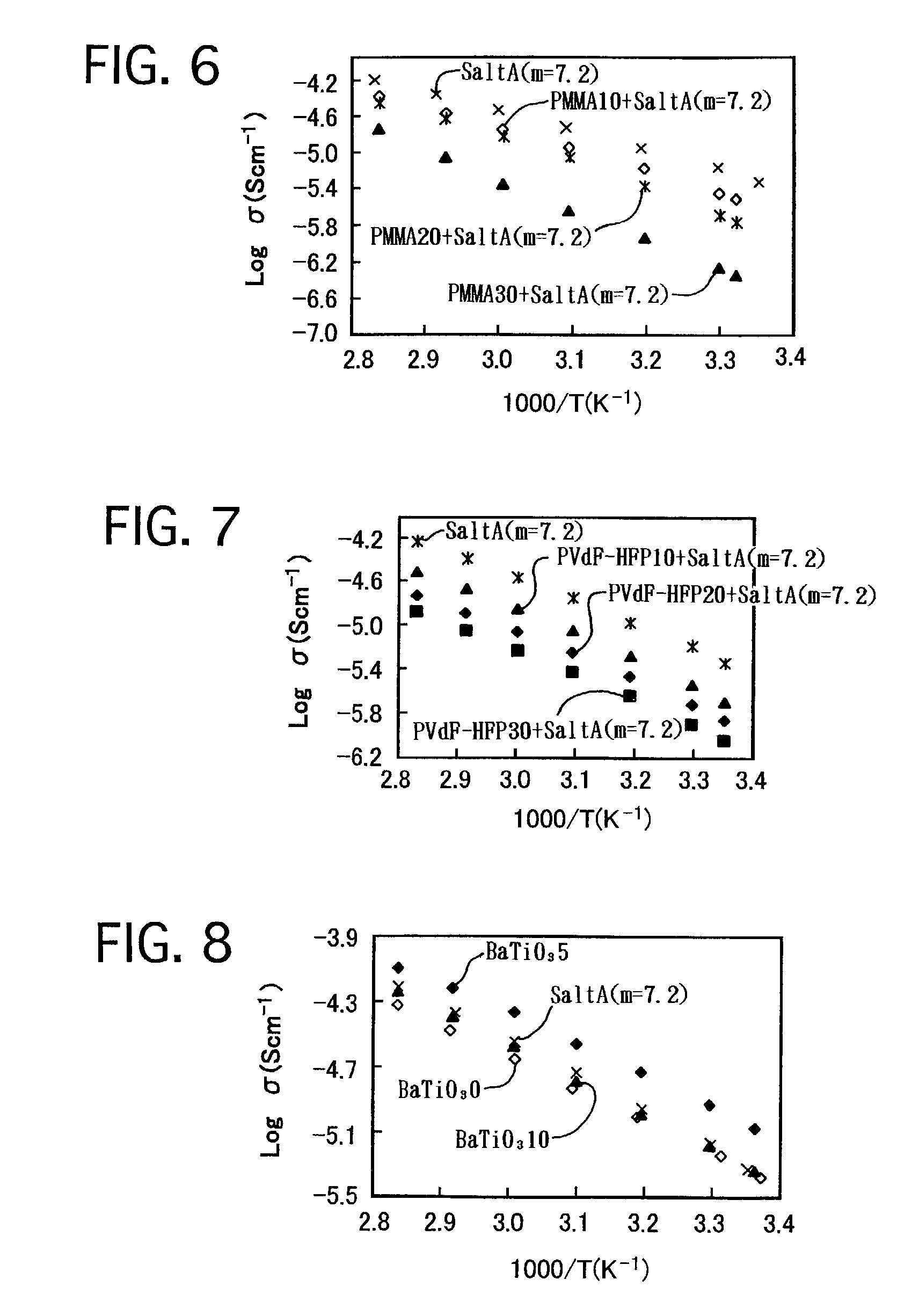Lithium salt, ionic conductor and liquid electrolyte
a technology of ionic conductor and liquid electrolyte, which is applied in the direction of non-metal conductors, group 3/13 element organic compounds, non-aqueous electrolyte cells, etc., can solve the problems of complex method of synthesizing polymer electrolyte, low ionic conductivity, and no one can avoid the effect of reducing the cost of synthesis
- Summary
- Abstract
- Description
- Claims
- Application Information
AI Technical Summary
Benefits of technology
Problems solved by technology
Method used
Image
Examples
example no.1
Example No. 1
Preparation of Lithium Salt
[0051]1M LiAlH4 was dissolved in 5 mL tetrahydrofuran (THF) to prepare a first THF solution. 0.551 g (3.36 mmol) triethylene glycohol monomethylether (TEGMME) was dissolved in 5 mL THF to prepare a second THF solution. Then, the second THF solution was dropped slowly to 1.68 mL (1.68 mmol) first THF solution at −78° C. Thereafter, the temperature of the mixture solution was returned slowly to room temperature, and the mixture solution was stirred for 4 hours. Meanwhile, 0.385 g (3.36 mmol) trifluoroacetic acid was dissolved in 5 mL THF to prepare a third THF solution. Next, the reactant solution was dropped slowly to the third THF solution at −78° C. The temperature of the mixture solution was returned slowly to room temperature, and the mixture solution was stirred for 9 hours. The solvent was distilled out by depressurizing, and the reactant was further dried at 70° C. by depressurizing for 48 hours. Thus, a transparent and highly viscous li...
example no.2
Example No. 2
Preparation of Ionic Conductors Comprising Polyethylene Oxide (PEO) and “SaltA (m=3)” or “SaltA (m=7.2)
[0056](1) 0.10 g PEO and 0.1646 g “SaltA (m=3),” which was synthesized in Example No. 1, were dissolved in 15 mL acetonitrile. The mixture was stirred for 12 hours. Thereafter, the solvent was distilled out by depressurizing, and the reactant was further dried at 70° C. by depressurizing for 24 hours. Thus, a white ionic conductor was prepared, and was labeled as “PEO+SaltA (m=3).”Note that, in “PEO+SaltA (m=3),” the ratio (O / Li) by number of atoms, i.e., the sum of the number of oxygen atoms, resulting from the oligoethylene oxide group, and ethereal oxygen atoms, included the structural member, with respect to the number of lithium ions, included in the lithium salt, was 20 / 1. Unless otherwise specified, the ratio (O / Li) will be hereinafter expressed in a ratio by number of atoms.
[0057]Moreover, the following were synthesized similarly:[0058]“PEO+SaltA (m=3)” in whic...
example no.3
Example No. 3
Preparation of Ionic Conductors Comprising Ethylene Oxide (EO)-Propylene Oxide (PO) Copolymer and “SaltA” and Measurement on Ionic Conductivity
[0079]0.0600 g EO-PO, in which EO / PO=90 / 10 by mol, and 0.3476 g “SaltA (m=7.2)” were dissolved in 15 mL THF. The mixture was stirred for 12 hours. Thereafter, the solvent was distilled out by depressurizing, and the reactant was further dried at 70° C. by depressurizing for 24 hours. Thus, a transparent ionic conductor was prepared, and was labeled as “EO-PO+SaltA (m=7.2).” Note that, in “EO-PO+SaltA (m=7.2),” the ratio (O / Li) by number of atoms, i.e., the sum of the number of oxygen atoms, resulting from the oligoethylene oxide group, and ethereal oxygen atoms, included the structural member, with respect to the number of lithium ions, included in the lithium salt, was 20 / 1.
[0080]The ionic conductivities of the ionic conductor of “EO-PO+SaltA (m=7.2)” system in which the ratio (O / Li) was 20 / 1 were compared with those of “SaltA (...
PUM
| Property | Measurement | Unit |
|---|---|---|
| Illuminance | aaaaa | aaaaa |
| Temperature | aaaaa | aaaaa |
| Electrical conductivity | aaaaa | aaaaa |
Abstract
Description
Claims
Application Information
 Login to View More
Login to View More - R&D
- Intellectual Property
- Life Sciences
- Materials
- Tech Scout
- Unparalleled Data Quality
- Higher Quality Content
- 60% Fewer Hallucinations
Browse by: Latest US Patents, China's latest patents, Technical Efficacy Thesaurus, Application Domain, Technology Topic, Popular Technical Reports.
© 2025 PatSnap. All rights reserved.Legal|Privacy policy|Modern Slavery Act Transparency Statement|Sitemap|About US| Contact US: help@patsnap.com



